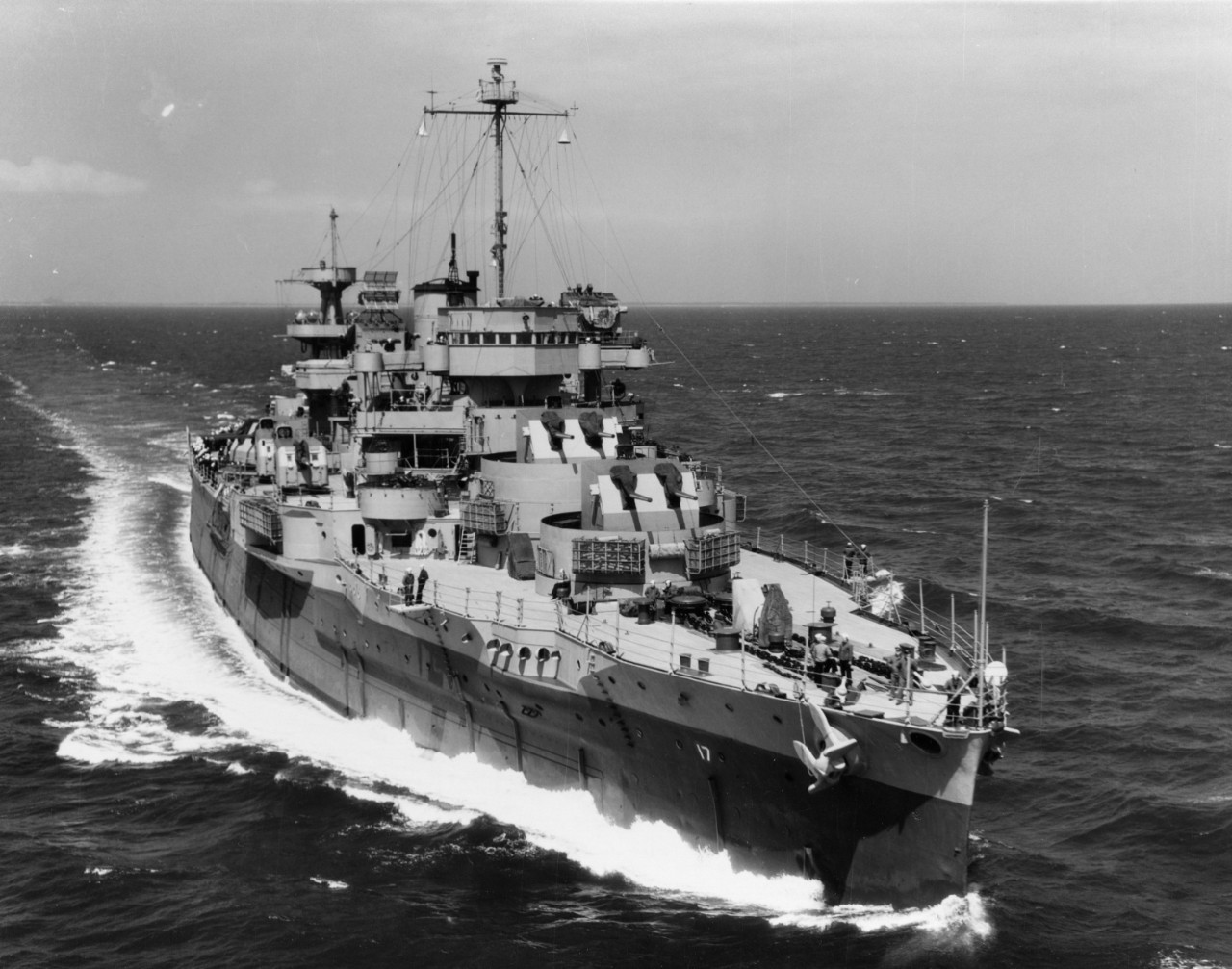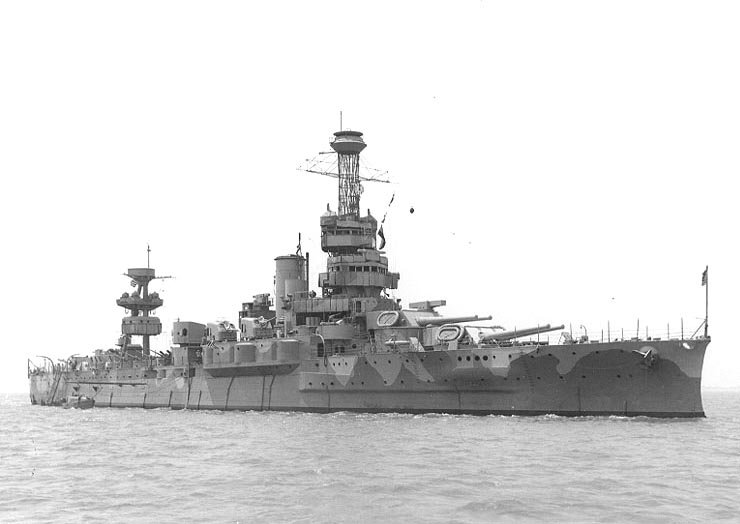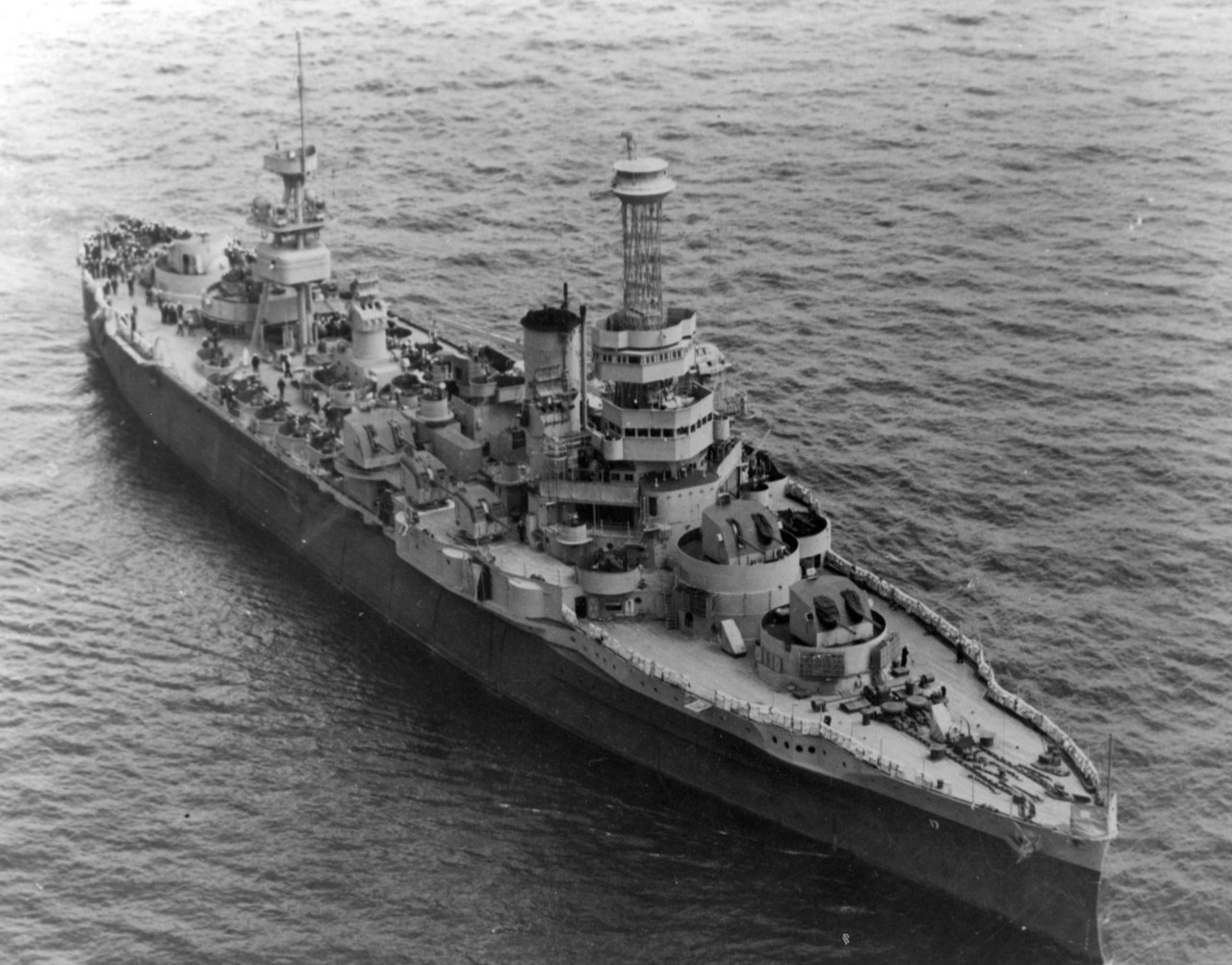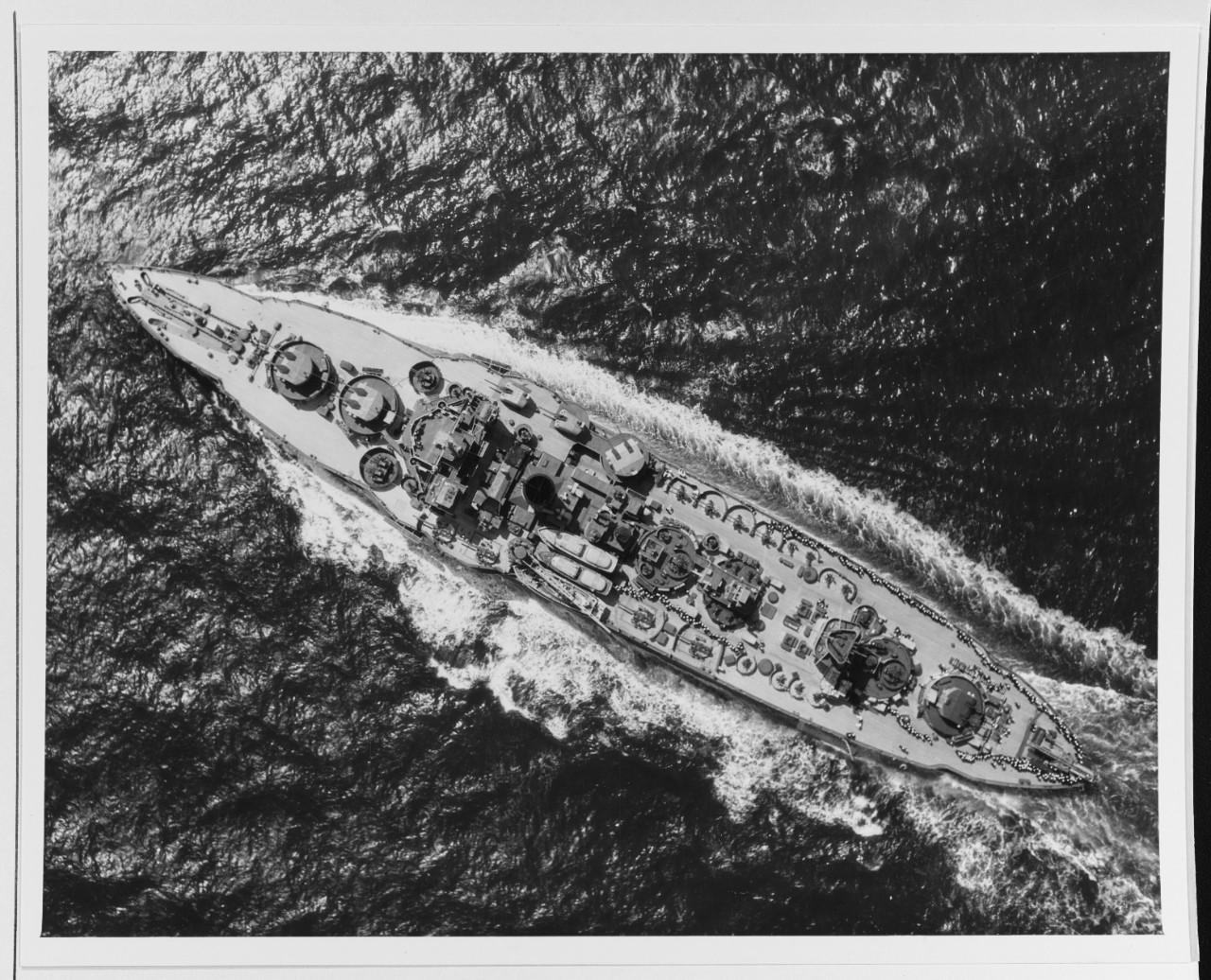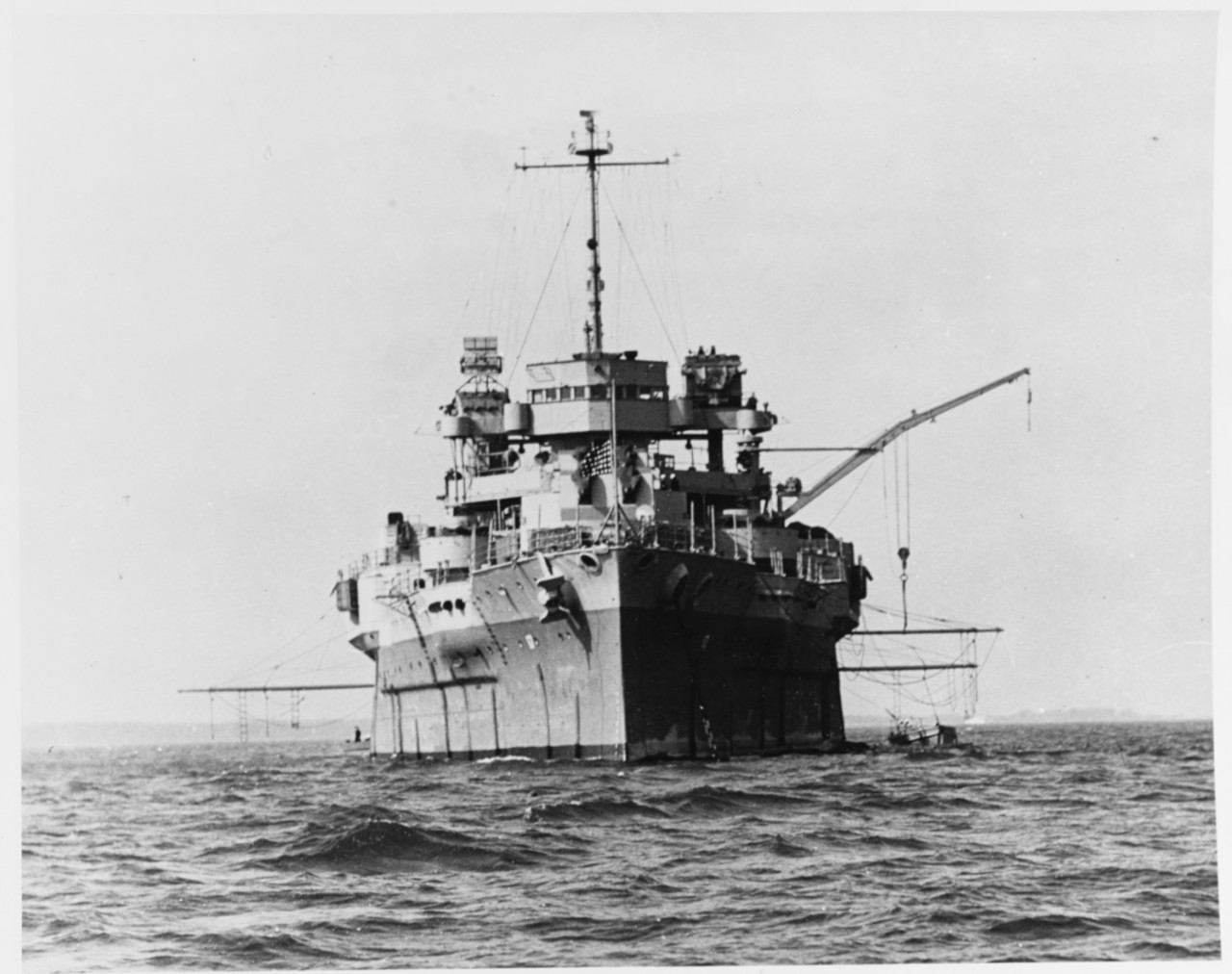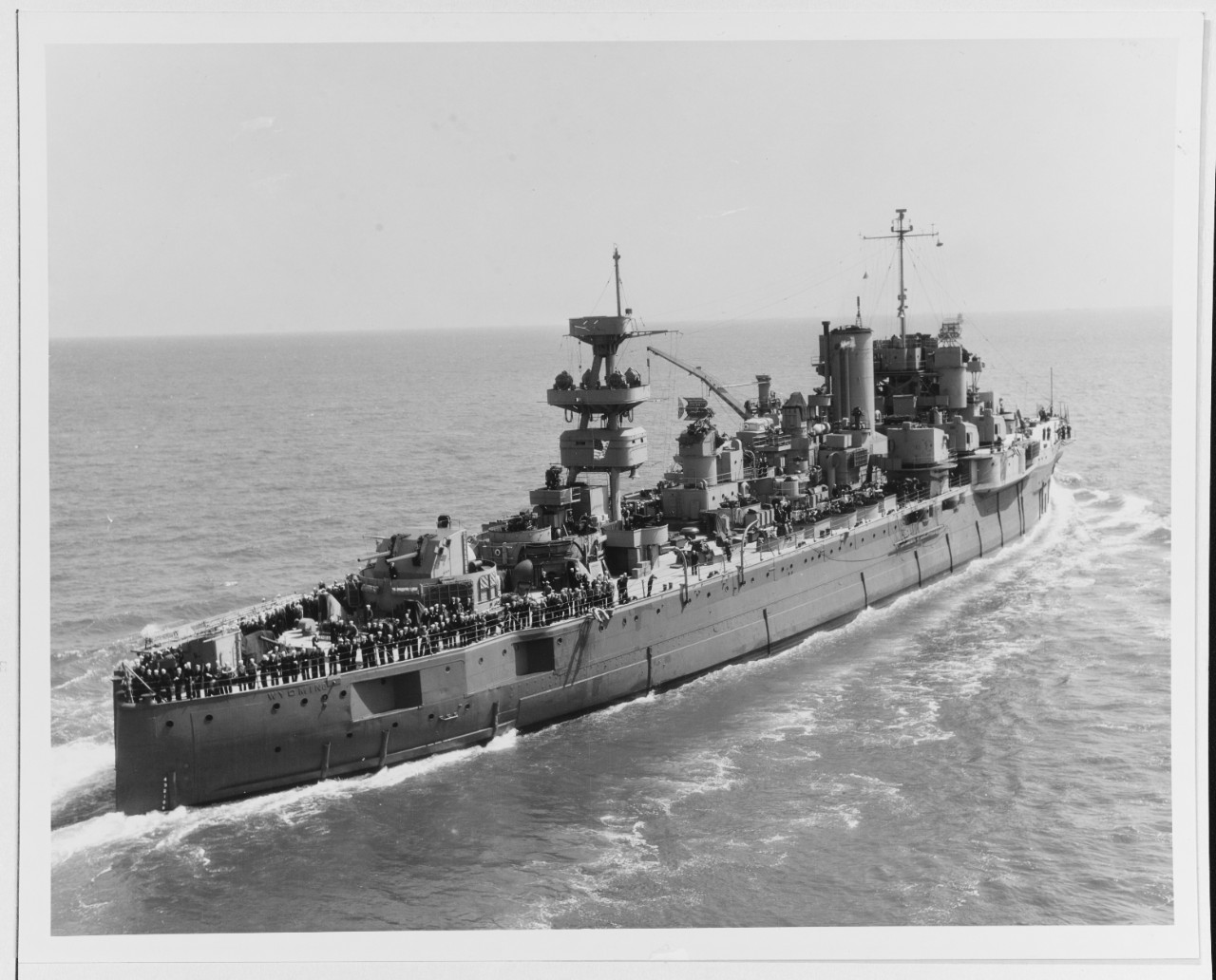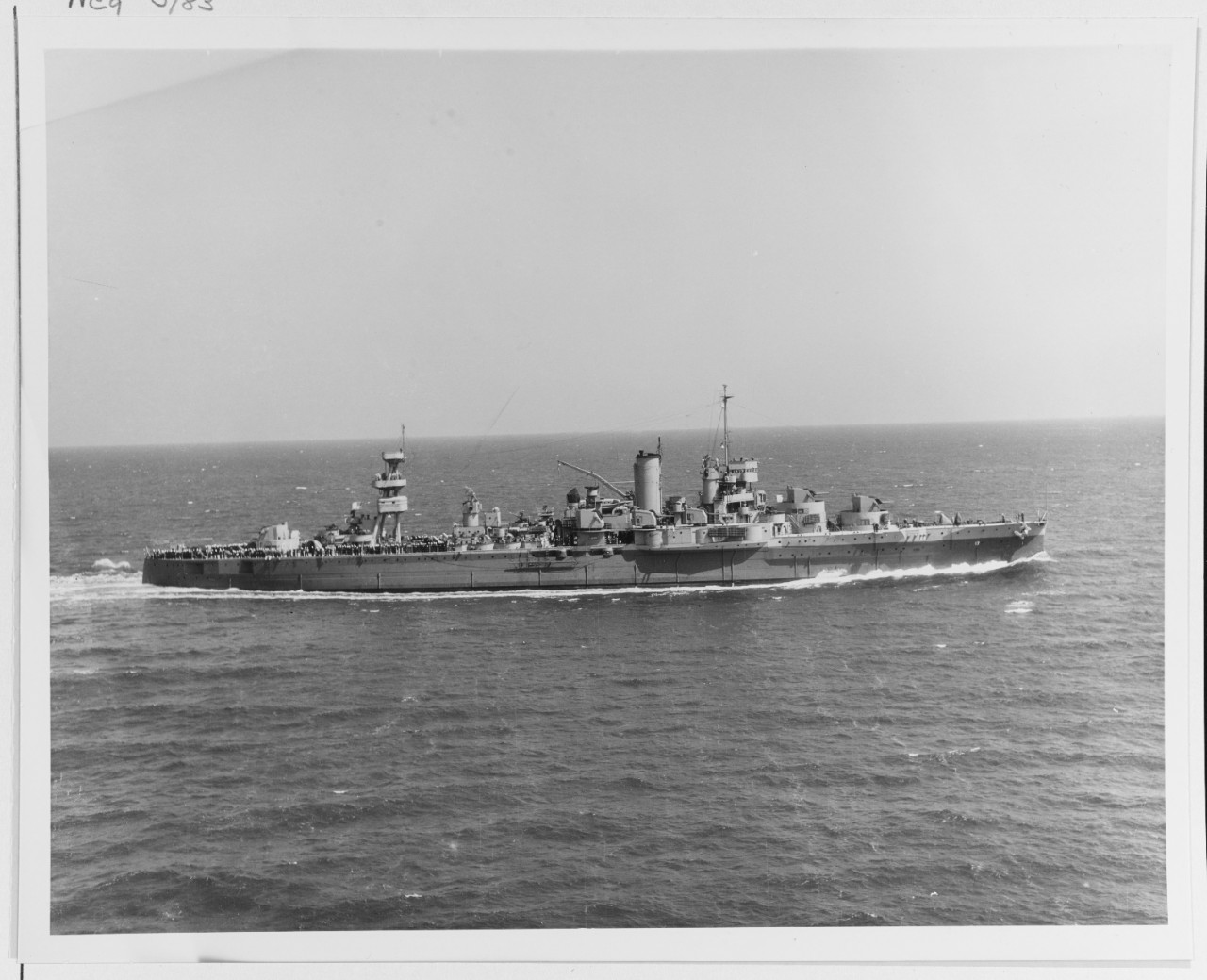- Yes
- No
Note: This suggestion was imported from the old War Thunder forum.
USS Wyoming (AG-17) underway after her final refit, 1945.
After the London Naval Treaty was signed in 1930, USS Wyoming’s career as a “super dreadnought battleship” has ended, as she were to be decommissioned in accordance to the treaty. However, unlike the other deadnoughts of her era, Wyoming’s career would not ended at a scrapping yard, but rather continued on as a training ship, underwent several modifications as a test bed, and would contributed to the US Navy in a different way compared to her sister ship Arkansas which continued to serve as a proper battleship.
Stern view of the Wyoming (AG-17) after her conversion into a training ship, 1935. Note the absence of the Q, P, and Y turrets.
On January 1931, the Wyoming was placed under “demilitarization” conversion into a training ship. During these process, half of her 12-inch guns, torpedo bulges, and side armor covering her sponson positions were removed. After her conversion were completed in May, she received her new hull number “AG-17” under the “miscellaneous auxiliary ship” category.
During the 30s up until Pearl Harbour, Wyoming spent her career training midshipmen and cadets via a cruise across the Atlantic, often making goodwill visits to various European countries, including an amphibious assualt training with the US Marines and a visit of the Admiral Graf Spee at Kiel, Germany in 1937.
After a refit in 1938 that saw the addition of her first set of 5-inch/38 guns on her starboard sides and removal of her stern sponson guns, Wyoming resumes her duty as a training ship until the outbrake of the war in Europe the next year. She was assigned to the Atlantic Reserve Fleet along with battleship Texas, New York, her sister ship Arkansas, along with aircraft carrier Ranger. In 1941, she underwent another refit to convert her into a gunnery training ship, removing the remaining sponson guns at the bridge and receiving several AA guns of various caliber.
Wyoming as a “gunnery training ship” in 1941. Note the lack of sponson guns.
As the United State entered the war in December 1941, Wyoming were assigned to the Atlantic Fleet’s Operational Training Command and operated around Chesapeake Bay, which later gained her the nickname “Chesapeake Raider”.
During the early stage of the war, the US Navy planned to convert the Wyoming back into her battleship configuration. This plan were later cancelled, however, as the Wyoming’s capability to train thousands of anti-aircraft gunners to accomodate the expanding American fleet has proven its usefulness.
Wyoming after her 1944 rebuild into an anti-air training ship.
Between 12 January to 3 April 1944, Wyoming underwent reconstruction to convert her into a fully delicated anti-air training ship. Her remaining 12-inch turrets were replaced with a twin 5-inch counterparts. She is also mounted with every model of fire control radars in use at that time on board to increase her training capabilities for different weapon systems.
Aerial view of the Wyoming, showing her asymertical weapon layout. 1945.
Bow view of the Wyoming in 1945. Note her asymmertical fire director arrangement.
As the War in Europe has come to a close, Wyoming received her final refit in April 1945 to serve as an “experimental gunnery ship” for what was later known as the Operational Development Force. There, she conducted gunnery training to develop tactics to counter Japanese kamikaze pilots and being a testbed for new fire control system. Wyoming served in this role until 1946, with one of her last batch of crew being the future US president Jimmy Carter. Wyoming was decommisioned on 11 July, 1947 at Norfolk, she would stay there until August to transfer her crew to the USS Mississippi (now AG-128), passing her role as an experimental testbed, before finally scrapped on 5 December. Ending her 37-year career under the US flag and 16 years as a training ship. During these years, she trained over 35,000 gunners of seven shipboard weapon systems.
Deck plans of the Wyoming in 1945
Other images
Specifications (1945):
Note: The displacement and speed specifications were estimated due to the lack of information of this specific refit. Though it should be slightly faster due to removed weight.
Displacement: ~25,000 - 26,000 tons
Length: 169 meters (l.p.p), 171 meters (overall)
Beam: ~28.42 meters
Draft: ~8.6 meters
Polpusion system: 4 × White-Fosters oil-fired boilers
Power: ~28,000 shp
Top speed: ~21 knots (~39 km/h)
Armament: 14 × 5-inch/38 (127 mm) dual-purpose guns in four dual turrets, two single enclosed turrets, and four open mounts. 4 × 3-inch/50 Mk.10 AA guns in four single mounts across the stern. 10 × 40 mm Bofors AA guns in three dual turrets and one quadruple turret. 12 × 20 mm Oerlikon autocannons, four single mounts and four dual mounts.
Protection: Largely the same with the battleship Wyoming, except the removal of armor around former sponson gun placements and torpedo bulges.
Crew: 621 minimum allowance, 1,462 maximum
Sources:
Spoiler
Battleship Photo Index BB-32 USS WYOMING
Researcher@Large - USS Wyoming AG-17 Booklet of General Plans Drawings
https://www.history.navy.mil/research/histories/ship-histories/danfs/w/wyoming-iii.html
USS Wyoming (BB-32) - Wikipedia
Breyer, Siegfried (1973). Battleships and Battle Cruisers 1905–1970. Doubleday and Company. ISBN 978-0-385-07247-2.
Friedman, Norman (1980). “United States of America”. In Gardiner, Robert & Chesneau, Roger (eds.). Conway’s All the World’s Fighting Ships 1922–1946. Annapolis: Naval Institute Press. pp. 86–166. ISBN 978-0-87021-913-9.
Nofi, Albert A. (2010). To Train The Fleet For War: The U.S. Navy Fleet Problems, 1923–1940. Washington, DC: Naval War College Press. ISBN 978-1-88-473387-1.
